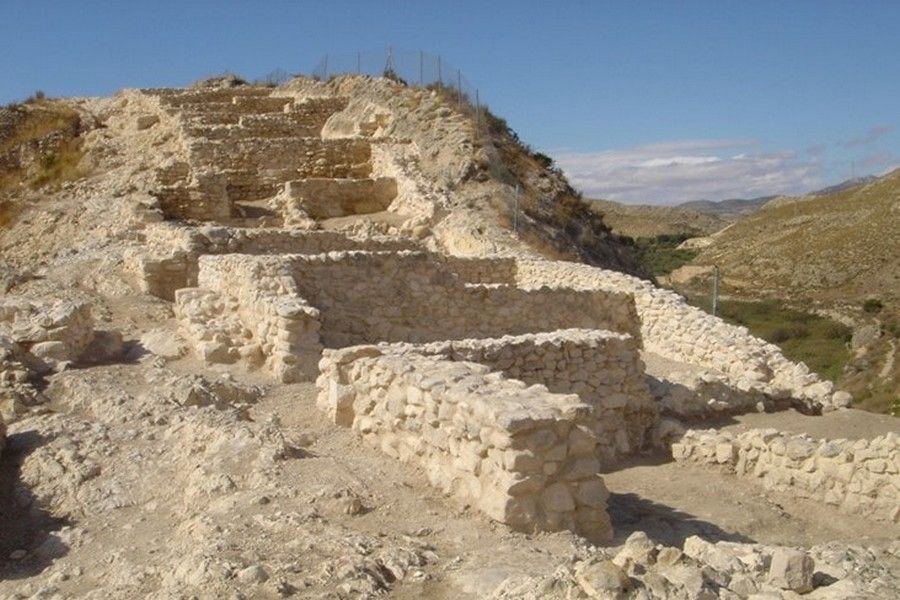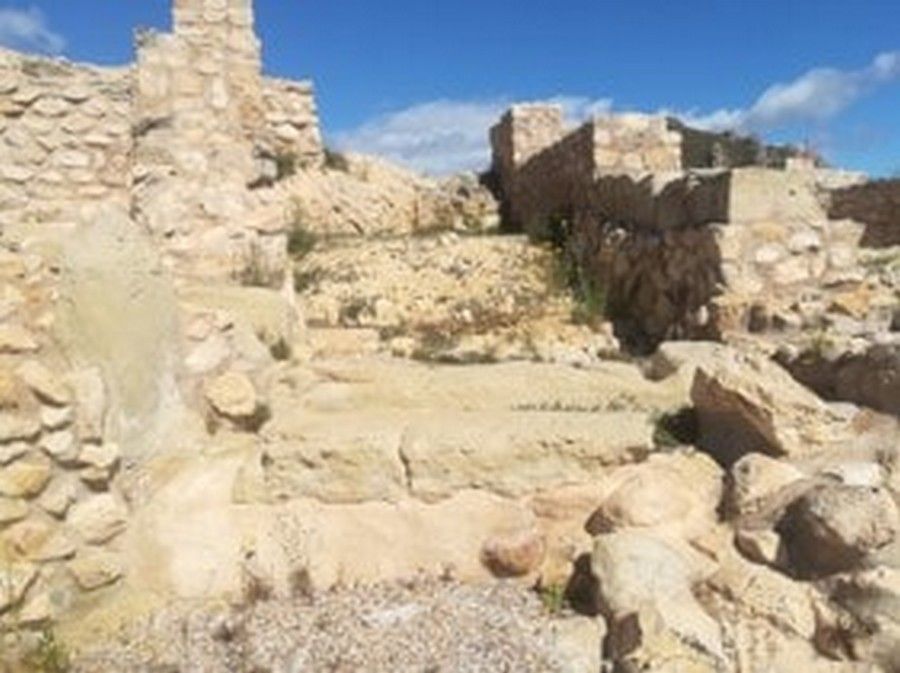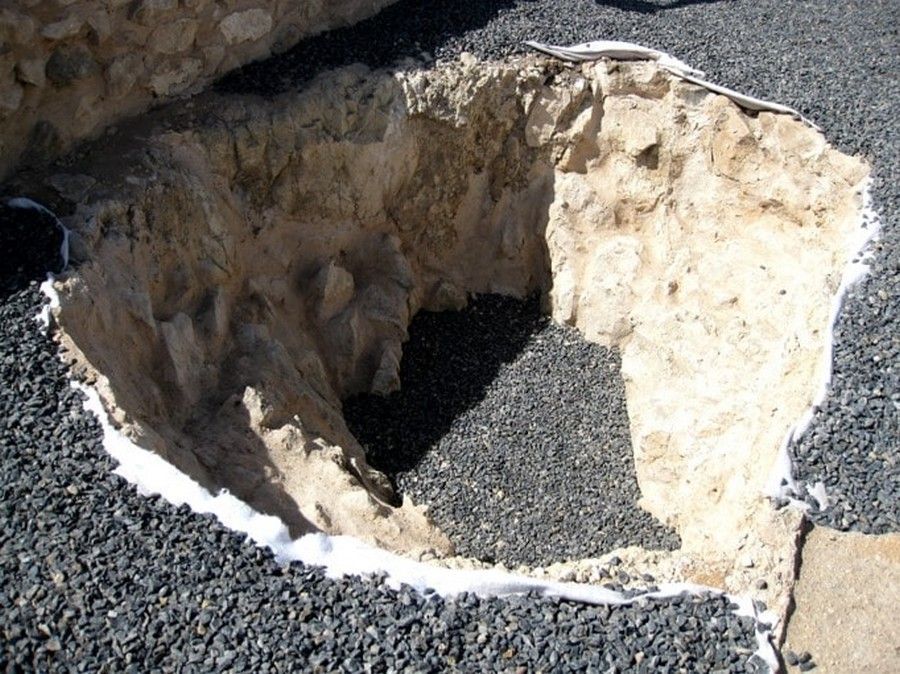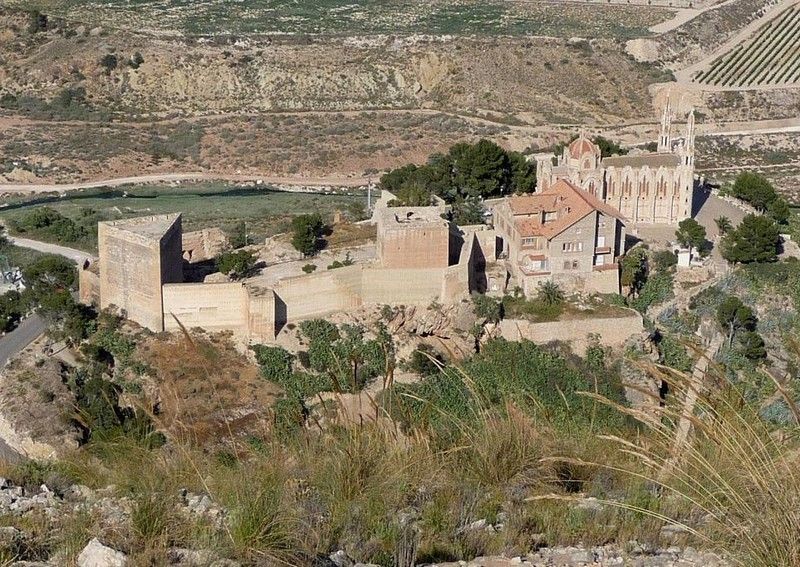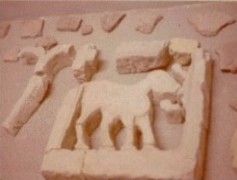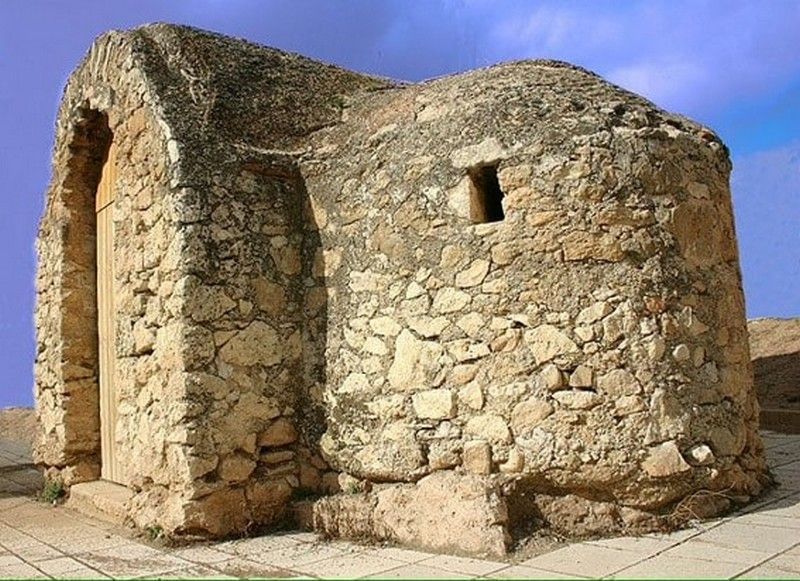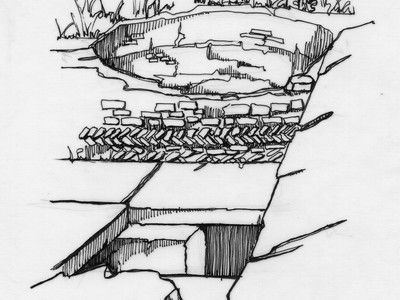YACIMIENTO ARQUEOLÓGICO DE EL MONASTIL

Historic environment
The first settlement on the top of the hill, from the Chalcolithic period, was followed by another from the Bronze Age, then had an Orientalizing / Phoenician phase until the Iberian culture emerged and an oppidum that soon became Romanized, emerging a pilgrim oppidum that was completely occupied by the Romans.
After a population vacuum from the s. II to III, achieves a great demographic and economic recovery between the s. IV and VI, being then when its wall will be redone, its accesses, central street and various rooms, many of them with two floors, will be restructured. Later it was occupied by Muslims at least until the 13th century.
Description
The site is located 1 km from the historic center of Elda, at the exit to the Alicante-Madrid highway, at the eastern end of the La Torreta-El Monastil mountain range, surrounded by a wide meander of the Vinalopó river.
 From the road in and out of Elda you can see a fenced area, in front, on the other side of the road, there is a parking area. Immediately from the road, there is a small access in the wall that delimits the site, then, to the right, there is a gate in the fence that allows access to the interior of the site.
From the road in and out of Elda you can see a fenced area, in front, on the other side of the road, there is a parking area. Immediately from the road, there is a small access in the wall that delimits the site, then, to the right, there is a gate in the fence that allows access to the interior of the site.
After the wall and ascending to the top, a monumental door made of spolia can be seen, which seems to be the access to a Byzantine monastery that extended in the upper part of the place, from its central part to the west, where a small church and annexes of the Byzantine phase and culture are preserved. It is accessed by a narrow street flanked by rooms, many with two floors, the largest and triple, next to a possible turris, it could have been the reception building and seat of political-religious power.
The church has a rectangular floor plan with an ultra-semicircular apse at its head, facing east; to its southern part, in a small room, a small pentagonal cave baptistery is preserved. Its architectural furniture and liturgical objects are preserved and exhibited in the Archaeological Museum of Elda, constituting an exceptional collection in Spain. Bearing in mind that this Byzantine castellum with a monastic church was conquered by the Toledo Goths at the beginning of the s. VII, that its name was Elo (Ad Ello) in the late-antique and early medieval itineraries, that the acts of the Councils of Toledo cite an ecclesia Elotana, it has been defended that the religious complex served as an ephemeral episcopal seat, later transformed into a Gothic monastery and small islamic al-munastir.
Antonio Poveda for URBS REGIA
Other interesting information
Free visit
Hours: Monday to Sunday by prior request.
Guided visits.
Bibliography
Poveda Navarro, A.M., 2003: La iglesia paleocristiana de El Monastil (Elda, Alicante) en la provincia Carthaginense (Hispania), L’edifice cultuel entre les périodes paléochretienne et carolingienne, Hortus Artium Medievalium 9, Zagrev, 113-126.
ID., 2019: Instrumentos eucarísticos de iglesia del castrum bizantino de Elo (El Monastil, Elda), VII Reunió d’Arqueologia Cristiana Hispànica. El cristianisme en l’Antiguitat Tardana. Noves Perspectives, Tarragona, 305-312.
Poveda Navarro, A.M., – Márquez Villora, – J.C., Peidro Blanes, J., 2013: La iglesia paleocristiana de El Monastil (Elda, Alicante) y su contexto arqueológico (ss. V-VII dC.), en Acta XV Congressus Internationalis Archaeologiae Christianae (Toledo, 2008), II. Studi di Antichità Christiana LXV, Roma, 2013, 1153-1165.
Portals





